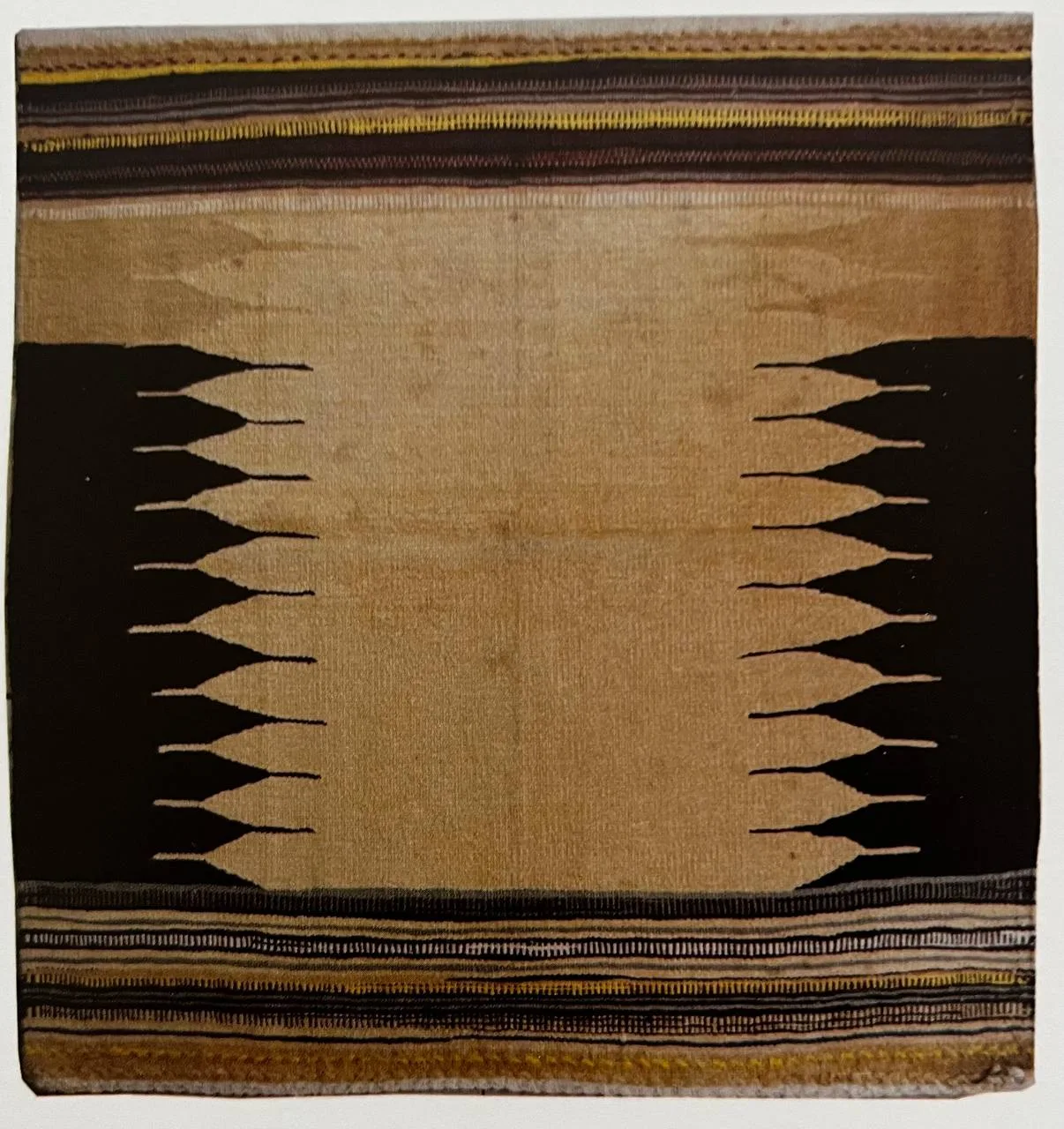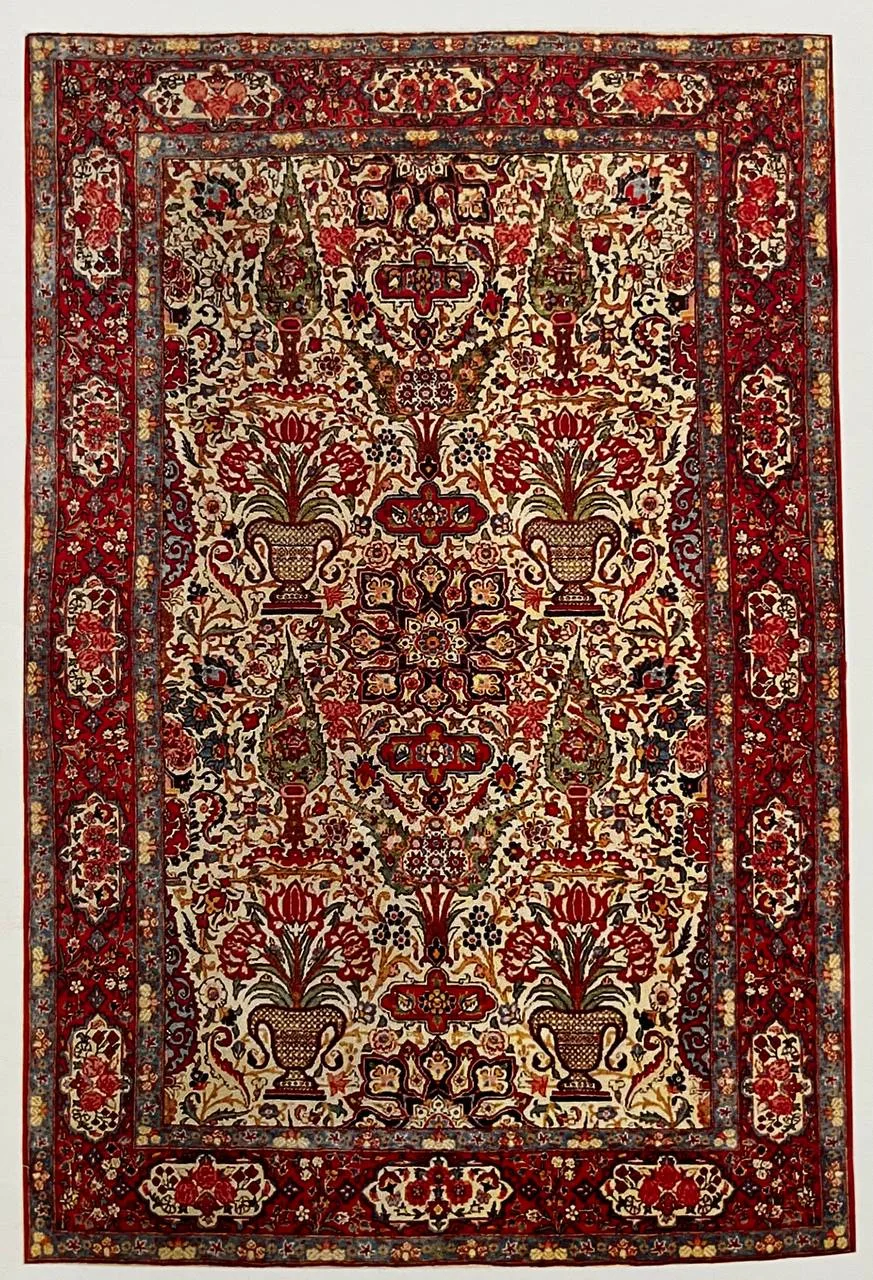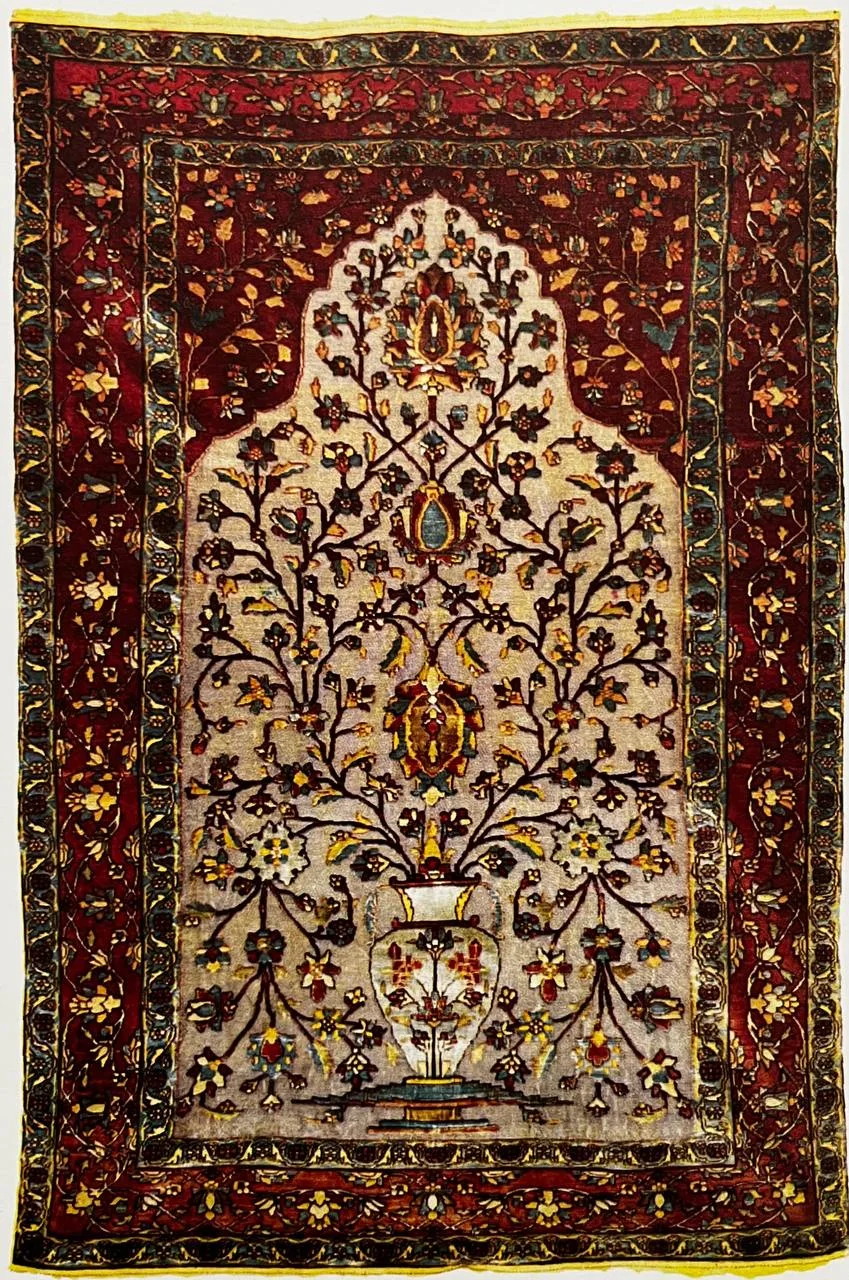The history of weaving (carpet) in Iran before Islam
A. Medes: Persian rug Will Durant states that “men and women wore crocheted clothing during the Medes because of wealth and luxury, especially in Ikhtovigo.” From the territory and empire they established, many examples of their art and culture can be found in both foreign and local sources. history weaving carpet Iran
B. Achaemenians: A wide variety of textiles and carpets were woven across the Achaemenid empire, and because to the contacts made by trade and warfare with other nations, they also took many artistic elements from them.

The Achaemenians were aware of foreign art forms, such as Assyrian building and Babylonian carpet and fabric weaving, based on the artifacts left over from the Achaemenid era. Highlights from the various ethnic groups that were ruled by the empire are visible, particularly those of the Madi and Persian ethnic groups. history weaving carpet Iran
*Click on the opposite link to see precious Iranian handmade and machine combined silk carpets*
“The Aryans who came to this land during the second millennium BC and They became natives, knew about the art of weaving cloth and carpet weaving, and the abundance of their livestock provided “enough and good” raw materials for this purpose,” according to Ali Sami, Ravandi states. history weaving carpet Iran
Iranians advanced in the art of carpet and fabric making during the Achaemenid era. Xenophon records that “the Persians followed the Medes in clothing, luxury, and splendor and used their carpets.”
“The soft carpets that Iranians put under their beds” is another item he highlights. Persian warriors once threw thick, plush rugs on top of their horses, according to Homer. persian Handmade carpet
According to Herodotus, “Amstris, the wife of Khasariashah, herself wove the expensive cloth for the king’s robe, which was unique to her.”
This method, which involves using strands made of gold and silver to make carpet first, can be seen as the origin of art, which eventually reached its pinnacle of beauty and artistry during the Sassanid era. history weaving carpet Iran

Cloth and carpets under the Achaemenid Empire were made from silk, which was probably imported from China, and cotton and linen, which were both found in hot, humid places like Egypt and India. Silk rug
According to the history of Iranian clothing, “gold and silver threads were also seen in various patterns among these silk garments.” Some nomads at this time decorated their floors with plush carpets that displayed every hue of the sun, moon, and earth.
Vegetable and mineral colors, which were well-known across the empire, were used to dye the textiles.
Mehr Asaghibi said, “Most of the fabrics were made of wool, cotton, and linen, and the colors of this period were purple, orange, turquoise, and brown, and they were decorated with lotus flowers, etc., which had a more religious aspect.”
Whether Alexander’s burning of the Apadana palace is a fiction or a true historical event during the catastrophic Achaemenid defeat of the Persians, it is undeniable that “a fire struck one of the expensive curtains of the palace and spread throughout the palace.” Persian carpet designs
Aside from the discoveries at Apadana and Persepolis, the Pazyrik carpet is arguably the most well-known Achaemenid creation—especially given that fragments of cloth from its original design were unintentionally preserved. It was discovered in the tomb of a Scythian monarch. Notwithstanding the assertions made by other nations on its texture, it appears certain because of the growth of the textile industries during that time and the discovery of certain remnants of the carpet’s texture in Achaemenid culture. history weaving carpet Iran

C.Parthians: During this time, two-strand weaves, which were popular in eastern Iran, moved westward. Although Iranian weavers employed the two-thread approach, they inverted the Chinese technique since they were accustomed to the weft weave and created a composite fabric. Depending on the Style and maktab of Persian carpet, one of the wefts was positioned on the fabric, and occasionally this weft was positioned on the fabric. It was entwined with the thread that isn’t part of the weft between the two rows.
D.Sassanians: The majority of historians and academics believe that the Sassanid era was one of the most prosperous before Islam in terms of the advancement of industry and artistic forms, particularly weaving. He looked for the growth of many businesses, such as the weaving sector. Carpets, taffeta, curtains, and dibas from that time period
Many people both inside and outside of Iran have purchased it.
Thankfully, a large number of these weavings have survived and may be found in Western museums and churches. history weaving carpet Iran
Composite fabrics: Known as “composite fabrics” in Northern Europe, Sicily, Italy, and Eastern Rome (Byzantium), this novel combination technique originated during the Sassanid era and never went away.
Twill fabric: During the Sassanid dynasty, Iran produced exquisite and delicate twill fabric from a form of cloth whose history dates back to the second millennium BC. Even now, textures of this kind are used.
Composite twill, a well-known technique for weaving patterned fabrics, originated outside of China and the East but gained popularity in Iran. As a matter of fact, it was the Iranians who were ultimately able to combine the accomplishments of other nations in the field of fabric weaving to create a method that has persisted for almost two millennia.
The Sasanian textile industry used the designs of painting, sculpture, pottery and other decorative forms. Matraz, Diba and Damascus silk fabrics for carpets, chair covers, canopies, tents and carpets were woven with great patience and masterly skill and painted in yellow, blue and green colors. Most of the gifts that were sent to nobles and other dignitaries were luxurious clothes and large colorful carpets, which were a part of wealth in the East. Fabrics of Sasanian times were imitated from Egypt to Japan. When Heraclius captured the palace of Khosrow Parviz in Tastgerd, embroidered fabrics and a large carpet were among his valuable spoils.
“Herakles (Heraclius) received a huge booty during the looting of Tastgard in the year,” says Christian Sen, citing historical writings. “According to Theophanos, it was a large amount of stainless steel wire and hoops that are used for religious ceremonies, as well as Ziriqt carpets and cloth.” White shirts and silks innumerable (were obtained).

Says Arthur Christian Sen Azgol Thaalabi, professor:
Takht Taghdis was one of Khosrow’s greatest jewels. The hours of the day were indicated by a mechanism, and on the bed was a silk Origins of Persian carpet with rubies and pearls sewn into it, each representing a different season of the year.
To help him forget winter, Anushirvan created “Baharistan Khosrow,” a winter carpet featuring images of spring and summer. Beside the streets of silver and the rivers of pearls on the gold fields, on this carpet of fruits, flowers, rubies, and diamonds.
In his history, Muhammad Jarir Tabari mentions Khosrow’s spring carpet, and other historians have since corroborated this account: “They found a rug from Diba Shast Arash and Shast Arash.” It was referred to as a winter carpet. When you opened it, it was winter and there were no flowers in sight.” The table is surrounded by emeralds and azure jade; from a distance, it appears to be surrounded by a thousand greens. You were not flowering in the world of greenery. Everyone positioned them on the correct side after Omar destroyed the table and all of the diamonds.
The history of weaving (carpet) in Iran after Islam
Dr. Christian Sen 2 outlines Iran’s industrial products as follows, according to the renowned Chinese traveler Hiuen Tsiang, who depicts the condition in West Asian countries around the beginning of the 7th century.
Gold, silver, copper, rock crystal, rare pearls, and other pricey materials are this nation’s principal exports. The weavers on this land create carpets, silk, and woolen fabrics, among other items. It is without a doubt true that one of Iran’s most significant industries has always been weaving.

A. Al Boyeh: Hasan Naraghi, according to W. Frieh: “One of the best examples of Haibuyan fabrics is the remnants of fabric from the Al Boyeh period.” Its primary function is that of a giant double eagle on the pea fields (color), according to Freiyeh, with “open wings, which take a person into the air with them, the birds are separated from each other by a pattern similar to a cedar tree” and “bands” visible above the heads of the birds. 3: “The fabric with motifs of an elephant and a dragon on it was most likely discovered in the center of the tomb and dates to the 4th century Hijri, during the reign of Albuya. history weaving carpet Iran
B. The Ilkhans: Marco Polo, a traveler during the Mughal era, said that although the Mongols and Timur after them plundered and destroyed Iran and many works of Iranian arts and crafts, they were gradually affected by Iranian culture.
The renowned Italian states aptly about Kashan’s velvet and silk industry during his visit: these textiles are distinguished by “the presence of running horses and rabbits and a vulture with open wings or animals on both sides of a tree” in their designs. It resembles the patterns and themes seen in Roisfal and occasionally metal objects. The impact of Chinese and Mongolian culture and attire is evident in the artwork and pictures that have survived from the Mongol era. A thinly bordered cloth and carpet are seen beneath Alexander’s coffin and on a leaf of Shahnameh Demut.
C. The Timurids: “The Timurid family and the Jalair family” made it their mission to revive Iranian art and culture. “The Timurid period is one of the eras of progress and development of fine arts and crafts in Iran,” claims Dr. Zabihullah Saf. The impact of this era on Iranian culture and peoples may be observed in the miniatures created by Shah Rukh and later by Hossein Baiqara, another Timur descendent who studied under Behzad and his followers. Although the existence of these goods is not supported by any evidence, it is evident from literature and paintings from this era that Shah Rukh and his family lived in an environment that was conducive to the manufacture of Persian carpet and textiles.
D. Safaviyeh: This period is one of the most brilliant periods of development of arts, industries, especially textiles and carpets. Quoting Pope, Krusinski considers Shah Abbas’s statement: “that every workshop should weave in its own way” as having an effect on the renewal of national arts and Iranian identity. The growth of woven fabrics, especially the improvement of the quality of delicate fabrics such as silk, velvet, and glabton (woven lace), had a great impact on the emergence of centers such as Kashan and Isfahan.

Darshardan2, in particular, the magnificent carpet for workshops and cities, writes: “They name fabrics combined with gold Zaribaft (Zari). Two types of zari fabrics are available: one is simple and comes in hundreds of colors and patterns, while the other is double-sided and has no front or back, allowing both sides to be used. Zarbafan is the name of another variety of velvet. The Iranian cities of Yazd, Kashan, and Isfahan are home to some of the country’s most elegant and stunning woven textiles.
